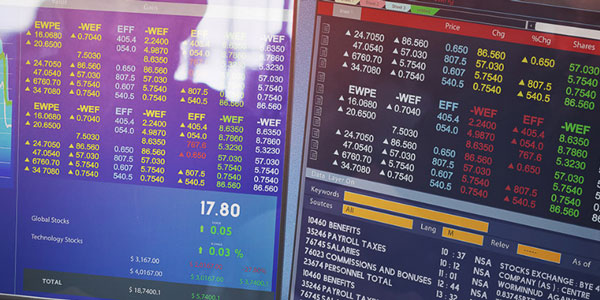The Rich: Why They Don't Invest in Index Funds
Dec 19, 2023 By Triston Martin
Warren Buffett, the world's most well-known investor, usually promotes using low-cost index funds. The trustee of his estate has been given explicit instructions to allocate cash to index funds.
It's as easy as putting 10% of the capital in short government bonds and 90% in a highly low-cost S&P 500 index fund, and he advised the trustee in Berkshire Hathaway's 2013 annual letter to shareholders.
But affluent people don't usually put their money into low-cost index funds that track the market as Buffett recommends. Instead, they put their money into high-risk ventures like art, real estate, hedge funds, and small enterprises.
How Do Index Funds Function?

Index funds are designed to mimic the performance of the underlying index they are pegged to. Index funds are low-risk investments with predictable returns corresponding to the underlying index. To keep costs down, managers often engage in minimal active trading.
How Much Do Index Funds Earn?

An index fund's rate of return is the same as that of the index it tracks. When comparing the returns of several index funds, one can see that an S&P 500 index fund and a real estate index fund provide notably different results.
What Are Index Funds' Drawbacks?
However, while index funds have a good track record, no investment strategy is risk-free. Not all index funds outperform the market they track, and some may be too inflexible for an investor who would want to adapt to the market as it shifts. The potential for significant gains is reduced with passively managed funds.
How Rich People Invest
Take former Microsoft CEO Steve Ballmer, estimated to be worth over $70 billion, as an example. He has almost 300 million shares in Microsoft, worth billions of dollars, despite quitting the business. Along with real estate assets in Hunts Point, Washington, and Whidbey Island, Ballmer also had a 4% holding in Twitter
45 He spent $2 billion to acquire the Los Angeles Clippers basketball franchise. 6 He has most of his money in a few accounts, as opposed to the hundreds of bills required if he followed Buffett's advice and purchased low-cost index funds. The rich also tend to invest in hedge funds.
Why Don't the Rich Use Low-Cost Index Funds?
The S&P 500 index has averaged around 9.5% per year over the previous 90 years. One would assume the wealthy would be pleased with such a return on their money. A 1955 investment of $10,038.47 in the S&P 500 yielded a 2016 value of $3,286,458.70. Index funds, which invest in the whole market, provide stable returns while spreading out the inherent risks of investing.
On the other hand, the affluent can take certain chances to increase their fortune. Consider also George Soros, the well-known financier, and speculator. He gained $1.5 billion in one month by wagering that the German Deutsche mark overvalued the British pound and other European currencies.
Why Don't the Rich Use Low-Cost Index Funds?
The S&P 500 index has returned an average of 9.53 percent each year over the previous 90 years. One would assume the wealthy would be pleased with such a return on their money. An investment of $10,038.47 in the S&P 500 in 1955 would have generated a return of $3,286,458.70 by the end of 2016.
Index funds, which invest in the whole market, provide stable returns while spreading out the inherent risks of investing. However, the rich can afford to take certain chances to increase their riches.
Take the case of George Soros, the world-famous financier and speculator. In a single month, they once gained $1.5 billion by wagering that the British pound and other European currencies were overpriced compared to the German Deutsche mark.
Despite their lofty claims, hedge funds have recently underperformed significant stock market indices. Nonetheless, their affluent customers stand to gain significantly by working with them. Renaissance Technology, led by James Simons, returned 21.5% to its backers after fees in the previous year.
Final Verdict
The rich have wealth, income, and access to resources. Even if they try to beat the returns of a low-fee index fund by making alternative investments, not all of their bets pay off. However, they are not as reliant on consistent profits because they have more than enough money to last for the foreseeable future. If Warren Buffett is comfortable with a low-effort investment approach in low-cost index funds, so can the regular investor.
-
 Banking Jan 20, 2024
Banking Jan 20, 2024What Are The Four Most Effective Methods of Sending Money Abroad
The United States sends $74.6 billion to developing countries yearly, as the World Bank reported. Their research shows that the average cost to send $1,000 to a friend or family member overseas is $60, or a transaction charge of 6%. Researched several money transfer companies to identify the best cost-efficient options available
-
 Investment May 09, 2024
Investment May 09, 2024Everything You Should Know About MetLife Insurance
MetLife offers term, whole, universal, and MetLife burial insurance. Policies let customers tailor coverage, add riders, and pick payment terms.
-
 Investment Dec 19, 2023
Investment Dec 19, 2023The Rich: Why They Don't Invest in Index Funds
The world's most famous investor, Warren Buffett, typically recommends investors put their money into low-cost index funds. The trustee of his estate has been given clear instructions to deploy monies to index funds. Berkshire Hathaway's annual letter to shareholders suggested that the trustee invest 10% of the cash in short-term government bonds and 90% in a low-cost S and P 500 index fund.
-
 Investment Jan 29, 2024
Investment Jan 29, 2024Mutual Funds and ETFs Invest in IPOs
You can make a lot of money if you invest early in a successful new public firm. That's why initial public offerings (IPOs) are so popular with investors and the media. However, investment in initial public offerings (IPOs) carries a certain risk. That's why IPO ETFs, or exchange-traded funds participating in initial public offerings, are worth looking into. If you're looking for a way to diversify your portfolio while maximizing your returns, they're a great option.
